PASS IT ON: MARY CHAPIN CARPENTER by Pearson & Warwick
MARY CHAPIN CARPENTER
FREE SPECIAL BONUS EDITION
3rd August 2025
a Warwick / Pearson edition
CONTENTS

1 Mary Chapin Carpenter & discography
Norman Warwick still plays all her albums
2 Mary Chapin Carpenter & occasional trio
followed by Peter Pearson,
Looking For A Thread
3 Mary Chapin Carpenter releases new album
Personal History
reviewed by Peter Pearson
4 THREE DIAMONBD QUEENS
reviewed by Norman Warwick
1 MARY CHAPIN CARPENTER and her songs
Norman Warwick
Singer song-writer, Mary Chapin Carpenter, is as difficult for me to categories now as she was when I first heard her on a tape given to me by an already famous, but difficult to categorise singer song-writer John Stewart, It has seemed at time as if country music has claimed her as its own, and it is true that she has often been at the top of the country charts. However there are those who say her cover versions and collaborations with singer writers like Steve Earle, Tom Waits and Lucinds Williams place her in a whole other genre.
That she is also perceived as a politically liberal, it is because she is atypically outspoken but has achieved critical and commercial success whilst honouring her own artistic inclinations.
Inspired by three life-changing experiences—a pulmonary embolism Carpenter suffered in 2007 and a subsequent depression, her divorce, and the loss of her father—Ashes and Roses, Carpenter’s third album since defecting from CBS/Columbia Records for Rounder imprint Zoe, explored darker themes than Carpenter’s previous work; nevertheless, the album ultimately affirms the possibility of survival and redemption. An artistic accomplishment in its own right, Ashes and Roses also affirms the possibility for musicians to survive a changing industry by making music on their own terms.
At the time of its release MCC agreed that her songs recorded on the album came, perhaps, from a different place to most of her previous material.
My mother and father had a huge record collection, everything from Fats Waller, Billie Holiday in my dad’s collection, to my mother having Woody Guthrie. I grew up listening to everything, and when I got signed to a record deal out of Nashville, that was my introduction to what was happening in country music. The people I started discovering were songwriters like Guy Clark, Lyle Lovett, and Steve Earle—I’d loved Emmylou Harris for years—and when I realized those were the people that were considered great country artists, I felt really drawn to them. Maybe it was the storytelling imbued in their songs or something unique to them, but I was really enchanted. To this day, those are the people that I think of as magnets for anyone discovering great country music.
I was really young, but I can’t say that I wrote much of anything. I liked to scribble; I thought of it as that. But I was playing guitar and ukulele when I was in second grade.
Being a musician and a songwriter went together, for me.. I suppose when I was a teenager, it was something I was doing a great deal of, but I don’t know if I committed myself to it. I just saw it as something I loved to do
A tape that I was working on to turn into a record fell out of my back pocket and found its way to an A&R person at what was then CBS Records in Nashville; that was around the time in the late eighties when artists like Lyle Lovett and Steve Earle were being signed to record deals, and somehow the right person at the right time heard me.
That was 1986. I’m 54 now, so you can do the math.
I was playing little bars and clubs in Washington DC, and during the day I worked at a small philanthropic foundation answering phones and doing paperwork and that sort of thing, so I had a day job to support my low paying night job.
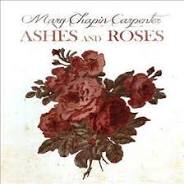
Ashes And Roses is very personal, obviously. When I got sick, I was just about to go on tour for a new record, and I had to torpedo everything. I was home for a couple of years trying to get past that illness, just feeling so lost and confused, and then the end of my marriage, which was just dreadful, and then losing my father that October. Honestly, I don’t know what else I would have written about. It seemed inevitable to try to address my feelings about everything that had happened. To a certain degree, it felt cathartic, but it’s less cathartic to me than it is illuminating and helping me navigate my own feelings. What people will hopefully take from this record is that there’s a narrative arc to it; there is an other side that exists that you find yourself eventually rowing towards, and the arc of the record hopefully mirrors that.
Mary Chapin Carpenter, speaking to Tom Andes of The Rumpus on line magazine, explained that she certainly tried to create an arc to enclose the album she was trying to write.
I was hoping to create that arc. The first song, Transcendental Reunion, on the surface, it’s a song about traveling, flying to England, but really, it was important to me that I start with that song because I feel like it sets up every song that comes after it. The first verse is about being suspended in the air, and you’re not really sure where you’re going to land. And then the idea that your suitcase is really—I don’t mean to get all Freudian—but your suitcase holds everything that’s important to you and informs you, and you want it to come out all right. And then the idea that people you’re elbow to elbow to with, these are the people that start out as strangers, but at a certain point in time, you realize you’re fellow travellers, and you have so much in common. Once you get there, you come out into this garish, neon-lit hall, and you’re rubbing your eyes; you’re not even sure where you’ve arrived. But this idea that there are people there to meet you, there are people there to be connected to, and you have come from night to day. Although everything that comes after that is the unknown, you can have hope and faith that you’re in one piece, and you’ll be all right. It’s important to know that and to recognize it.
I sit at my desk, and I have a guitar on my lap. I like to have a yellow legal pad and a pencil with an eraser. 20-some years ago, I’d have a big old radio with a tape deck, and I’d hit record and try to get something down on the tape, but nowadays, I can use my handy little smart-phone; I sing into the app for voice memo. The thing about it is, you can either put an idea down, or I’ll sit here, and I’ll finish the song. I’ll record it into the voice memo, and then I can email it to myself; then I can dump it into iTunes. That’s how I did all the demos for this last record. I sent them to my co-producer, and he was laughing because I usually send these shit sounding Garage Band demos.
I like to feel that every day or most days, I do a little bit of writing. I am a creature of habit in terms of the way I live. I get up in the morning, and I work out, or I take a hike. I come back, and around lunchtime, I start work. I work in my office through the afternoon. Having said that, I spent a lot of time at night writing these songs, and that was different.
In the case of this record, because my guitar and vocal are so front and center, the songs didn’t change all that much from the demos. The wonderful musicians that I work with, they certainly contributed to everything that you hear, but the foundation of those songs pretty much stayed the same. That said, I think in previous records, there’s been enormous reliance on my part on the generosity and the creativity of the players I’m working with. The joy of being in the studio is having people being utterly free to throw out their ideas. I know some artists who come out of country music and the three sessions a day work ethic where you walk in, and you’re told you play this note, this note, and this note, and you don’t vary it. I know that works great for some people. It wouldn’t work for me.
There’s been any number of times where we’ve felt like the first or the second take has been a keeper. But I’m a bit of a perfectionist. I want to try it again and again, and a lot of times my fellow musicians have to hold me back and say, “Nah, I think we got it.”
I excavate different things in my songs as I play them live and realize what is possible to reproduce well and what is not. I feel like they’re different creatures, live and in the studio, but that’s what makes it so interesting to me. If they didn’t have any different shadings or colours, you might as well be a hologram or something.
I have a different group of musicians I play with on the road, and I’ve been very lucky that they’ve been with me for a long time. Even after I had to take a number of years off when I got sick, they still played with me. I’m grateful for that
When I was finding a spot on what we think of as country radio a number of years ago with Lucinda Williams’ song [Passionate Kisses], for example, that was tremendously exciting and unexpected to me, but I feel like the reason that was able to happen—certainly because of a lot of hard work and support and belief by a lot of people—but the bedrock thing of country music is, it’s about storytelling. I feel like I was able to find a niche because I connected to that in some way. But everything changes in every genre, whether it’s pop, rock or country, and maybe had I come along at a different time, like right now, that might not have happened. As far as politically how country music goes, it’s true that it’s regarded from a distance as a genre of music that at different times, the more right elements of the political spectrum have claimed for their own; at the same time, I can name any number of known country artists who support more liberal or Democratic candidates, so it just depends what the spotlight is on at that time..
I feel like politics have always informed what I do. If you know anything about my music, you know I’ve never been shy about stating how I vote—everything from doing Voters for Choice concerts with Joan Baez and the Indigo Girls to doing a rally for Joe Biden last weekend. There was a time when I was starting out in country music when it was sort of implied, do you have to be so in there with that stuff? I felt like, okay, maybe the powers that be don’t take it that well, but that was who I was. But let’s face it, the Dixie Chicks, people lobbed amazing professional grenades on them, and I never experienced that. I have certain songs that have been unequivocal about what I believe, like “Stones in the Road” or “On With the Song,” but I think topical song-writing is a real gift, and it’s hard not to be pedantic and show up with the sledgehammer message. Songs that do that, I’m kind of allergic to.
I gave the new Ashes And Roses record to a friend, and he said, “It’s very you.” I was pleased by that. It made me feel like, “Oh, wow, I never really thought there was a me in there.” I don’t know if I set out almost 30 years ago thinking I’m going to try to craft a persona. I love to write songs and sing them, and I didn’t really know much more than that. Somehow it’s gotten to the point where a friend can say, “It’s very you,” and that made me feel good.
I think on a stage in front of thousands of people is a wildly invigorating and amazing experience, and it requires a certain skill set; then being in the studio, and being curled up in the fetal position under the piano, that requires another skill set. I’m being silly, but they are different, and it’s their difference that draws me toward both of them. I love working in the studio and the sense that we have all night and all day to be as experimental and creative as we want to be. I also feel that it’s nothing if not an incredible privilege to be able to get up on stage and play for people, and I don’t ever take it for granted.
At the time at which I elected to go to Zoe, which is an imprint of Rounder Records, I had been with Columbia for 20 years. About eight or nine years ago, things were changing in the delivery system of music, and it was important to acknowledge and embrace all the different things that were happening. As amazing as it was to be on Colombia, if I wasn’t on the radio toward the end there, I felt like I was letting them down in my part of the marriage. The decision came down to what kind of pressures and artistic sense of yourself do you have? It made sense to start out somewhere new, and I was delighted to find myself at Zoe Rounder. I haven’t had that sense that I’m letting them down if I submit a record that doesn’t have songs that they feel they could take to radio. It’s almost like I could stop reading the charts.
In the late 80s, artists could be signed to labels and be nurtured. It wasn’t, “We’re going to give you one shot, and if you don’t measure up, you’re gone,” which is the way it is now, even with only two major labels left. The pressure is enormous. If you fail, you’re gone. When I started out, it was this sense of, ”Let’s put out a record and see what happens and see where you go and see how you feel and where we can take it.” That was a very different world back then. I certainly felt the desire to reach as many people as I could; I wanted to make the most of this opportunity, sure. But I wouldn’t call it pressure the way we’re thinking of it now.
Just the most obvious thing, all the delivery systems for music, and the fact that if you’re 16 years old, and you’re passionate about music, you can do it yourself. It used to be, in the Dark Ages, the only sort of on-ramp to that would be getting signed to a record deal. That phrase alone is antiquated. Nowadays, anybody can do it, and that makes it tremendously exciting. As a result, you can’t keep up with everything. There’s just no way. But at the same time, I wouldn’t want it to go back to the old way.
I was born and spent the first 10 years of my life in Princeton, New Jersey. My father worked for Life magazine, and we moved to Japan for a couple of years for his job there. When we came back, we moved to Washington DC. I lived in DC for 27 years until I got married, and then I moved to Charlottesville, Virginia. I’ve lived here for nine years, and now I’m moving again, back towards DC, essentially. I owned a house in Nashville for about four months during an ill-fated relationship; I thought I needed to move there to be with him, but the relationship didn’t last, and neither did my ownership of the house. So I’ve never lived there, but I’ve toyed with the idea because I have a lot of friends there, and I think someday I might end up there.
It seems like everybody’s spread out. My engineer, Chuck Ainlay, and Glenn Worf, my bass player, live in Nashville, but everybody else came from different areas. It just seems like you really can come from anywhere and do what you want to do.
The above interview was conducted by Tom Anders, and the completeness and continuity of Mary Chapin Carpenter´s response speak volumes of what must have been the gentle prodding and pushing nature of Anders questioning. This gives room for an artist to insert stories, anecdotes and opinions of their own to produce an interview that reflects well on both interviewer and interviewee.
That demo tape of what became Mary Chapin Carpenter´s first album contained a song called This Shirt, and I have loved all her work ever since. Of course I have a preference for her dusty sidetracks and detours sound (if there is such a thing) but I truly believe an artist has a right, perhaps an obligation even, to record whatever they want to record. And I have learned through listening to artists like Nanci Griffith and John Stewart (he it was who gave me that demo tape of MCC´s first album) that such artists will always deliver their core musical skill set in any genre of their choice..
Interestingly, though, Peter Pearson, my colleague here at Sidetracks and Detours recently sent me a taped recording he had found of John Stewart and Mary Chapin Carpenter, playing Runaway Train, that became a number one for Roseanne Cash. That version feels to me to be chronologically accurate, as I think the song would have been a hit at about the time MCC was recording her first album.
The Roseanne Cash Number One song included an accelerating percussive beat, some great and glorious guitar riffs and somehow the lyrics came across as being sung by a woman hurtling into an extra marital affair, or perhaps addressing the forthcoming end to her marriage because of the infidelity of one or the other of its partners. (Too much open reading, Mr. Warwick, my university English Literature Professor would have written on the foot of such an essay. Stick to only what the lyrics tell you !)
He would have been absolutely right because when those same lyrics are set beside a more sober, single guitar and the understated, yet still glorious harmonies between John Stewart and Mary Chapin Carpenter, the song seems to be talking rather about the state of the world being a runaway train. Fans such as Peter Pearson and I are thrilled by this very old ´new´ version of the song, but brilliant though it was the John and MCC version would not have achieved the commercial success that Roseanne´s did.
Mary Chapin Carpenter intended her own version of Runaway Train to be included on her first album, Hometown Girl. Her version did not make the final cut, and was instead recorded by Roseanne Cash on her 1987 album King´s Record Shop, as m entione oin the Bob Harris Country Show on bbc rad 2 aon 30 July 2025.
Chapin´s debut album was released on July 30, 1987 on Colombia Record. The album did not produce any chart singles. It was produced by John Jennings, except for the track Come On Home, which was produced by Steve Buckingham
Vik Iyengar of All Music gave the album a two-and-a-half star rating out of five, saying that although “her songwriting skills are apparent” on the album, it did not contain as many “rollicking” tunes as Carpenter’s following albums . The Washington Post gave it a more favorable review, praising the songs that Carpenter had written.
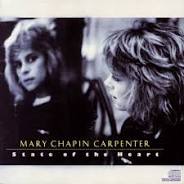
State of the Heart was the artist´s second studio album released on June 13, 1989.
Featuring a more country sound than her debut (1987), State of the Heart eventually rose to the No. 28 position on the Billboards Country Muisc Chart , with four of its tracks finding places within the Hot Country Singles chart. Chronologically, they were How Do at No. 19, Never Had It So Good at No. 8 Quitttin Time, at No. 7, and Something Of A Dreamer at No. 14.
Shooting Straight In The Dark is the third studio album bythe American singer-songwriter Mary Chapin Carpenter It rose to No. 11 onBillboard with four of its tracks reaching the Hot Country Charts : You Win Again (No. 16), Right Now (No. 15), Down At The Twist And Shout No. 2), and Going Out Tonight (No. 14).
Members of the Cajun band, Beausololliel provide guest instrumentation on Down At The Twist and Shout. Furthermore,Shawn Colvin also provided backing vocals on three of the album’s songs.
A few years after this, I had the opportunity to conduct an after gig interview with members of Beausoliel at Bury Met. Their performance of Cajun influenced music had been thrilling and they are now somehow fused in my mind with Mary Chapin Carpenter.
Come On Come On, her fourth studio album, was released by Columbia on June 30, 1992. Seven of its tracks reaching the Hot Country Songs chart: I Feel Lucky (No. 4), Not Too Much To Ask (a duet with Joe Diffie , No. 15), Passionate Kisses (a cover of the aforementioned Lucinda Williams song, No. 4), The Hard Way (No. 11), The Bug (a cover of Dire Straits song, No. 16), He Thinks He´ll Keep Her (No. 2), and I Take My Chances (No. 2). Passionate Kisses also reached No. 57 on the Billboard Hot 100
By 2017, the album had sold 2.9 million copies. It remains one of Carpenter’s best-selling album.
Stones in the Road is the fifth studio album by American singer-songwriter Chapin, released by Colombia Records on October 4, 1994. It became her first album to reach No. 1 on the country albums chart, and first album to reach the top 10 on the Billboard 200.
It also contains her first No. 1 Hot Country Singles hits, Shut Up And Kiss Me which also reached No. 90 on the Billboard Hot 100 . Other charting singles were Tender Whe I Want To Be (No. 6), House Of Cards (No. 21), and Why Walk When You Can Fly Why Walk When You Can Fly? at (No. 45).
The nostalgically themed title track was first recorded by folk singer Joan Baez for her 1992 studio album Play Me Backwards, (an album that also included a cover by Baez of John Stewart´s Strange Rivers). Carpenter first pitched Stones In The Road to Joan during a joint concert appearance before she recorded it herself. It was also featured in the 1995 film Bye Bye Love . Carpenter earned two Grammy Awards in 1995 for her work on the album:Best Country Album and Best Female Country Vocal Performance (for Shut Up and Kiss Me), the fourth straight year she won the latter category. In 2006, Country Universe called it the best Contemporary Country Album of all-time.
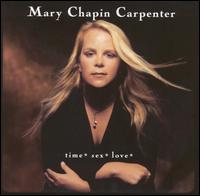
Time* Sex* Love* was the seventh album by Mary Chapin Carpenter released by Colombia Nashville Columbia Nashville on May 29, 2001. It rose to No. 6 on the the charts and produced two singles: Simple Life, which peaked at No. 53 on the Hot Country Songs chart, and This Is Me Leaving You, which failed to chart. Despite its low airplay ranking, Simple Life spent 28 weeks on Billboard’s Top 25 Country Singles Sales chart, peaking at No. 8 on May 5, 2001. The album was recorded at George Martins AIR Studio in London
The asterisks asterisks in the title refer to a comment producer John Jennings had made about the album’s content: “Time is the great gift; sex is the great equalizer; love is the great mystery”
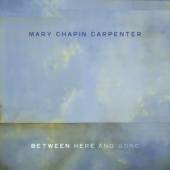
Between Here and Gone is MCC´s eighth released by Columbia Nasshville e on April 27, 2004. It reached No. 5 on Billboard´s Top Countyr Albums although the album itself produced no chart singles. The title track was written by Carpenter upon hearing of the death of singer-songwriter Dave Carter.This was Carpenter’s last studio album on Columbia Records Nashville.
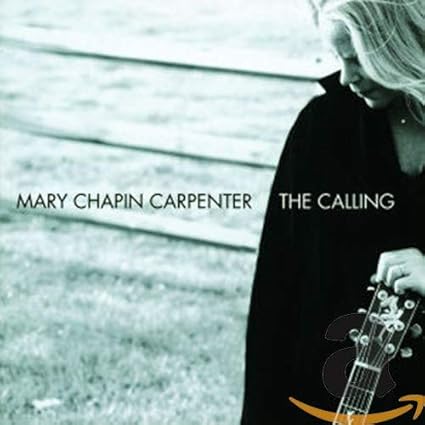
The Calling, her ninth studio album was released through Zoe Records on March 6, 2007. This album was her first release on a new label, as well as her first studio album since 2004’s Between Here And Gone. Like her previous release, she wrote every song on the album, which went to No. 10 on the Billboard Country Albums Chart .
Two singles were released, On WithThe Song and It Must Have Happened, but neither charted.
Thom Jurek of AllMusic gave the album 4-out-of-5-stars and said: “Time will tell, of course, but in The Calling, Carpenter may have her finest moment yet; it also feels like an artistic rebirth. These songs come from her marrow and the conviction she sings them with proves it. Carpenter and her co-producer Matt Rollings should be awfully proud of this one.”
Come Darkness, Come Light: Twelve Songs of Christmas is the 10th studio album and represents the American singer-songwriter . The obviously Christams – related album was released on September 30, 2008 by Zoe Records, and was her second release under this label, having bee produced by Carpenter and John Jennings.
The album made it on to the Billboard Top Holiday albums chart.
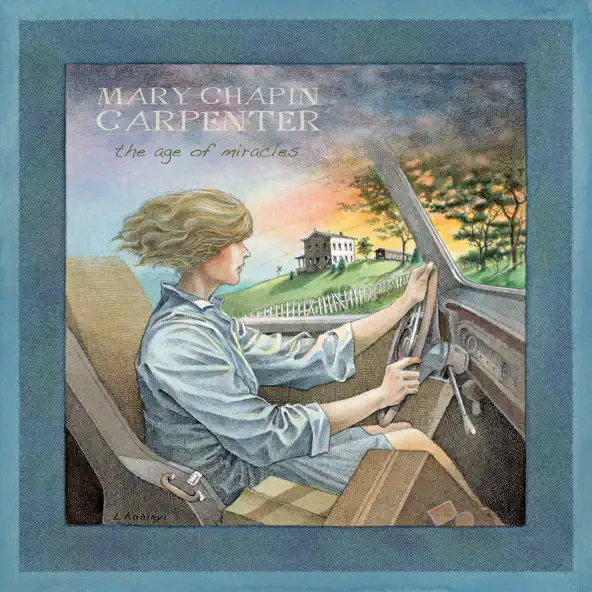
The Age of Miracles, also on Zoe Records, became the 11th studio album by Mary Chapin Carpenter when it waseleased on April 27, 2010 as her third album on the label.
Produced by Carpenter and Matt Rollings , the album peaked at No. 6 on Billboards Country Albums chart and No. 28 on the billboard top 200 chrat
Ashes and Roses, the 12th studio album by American singer-songwriter Mary Chapin Carpenter, released on June 12, 2012 as her fourth album released under the Zoë label.
Produced by Carpenter and Matt Rollings , the album contains 13 original songs written by Carpenter on the standard release, and 14 tracks on the Barnes & Noble exclusive edition.
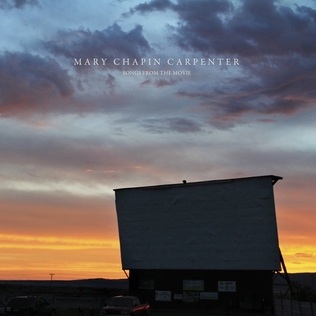
Songs from the Movie was a 13th studio album by American singer-songwriter , released by Zoe Records on January 25, 2014. The orchestral music album is a re-recordings of her songs, guided by American composer Vince Mendoza and received positive reviews from critics.
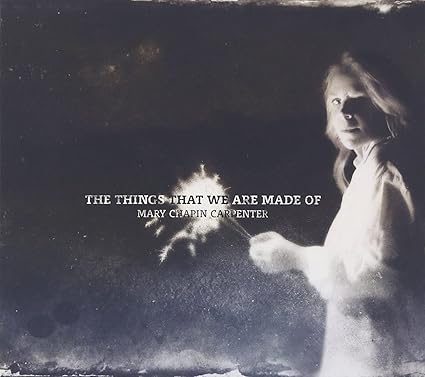
The Things That We Are Made Of (left) is the 14th studio album by Mary Chapin Carpenter , released by Lambent Light Records on May 6, 2016. The album was produced by Dave Cobb, who has soince become a hugely respected producer, who also releases occasional solo recordings. Over the almost ten years since working on The Things That We Are Made Of, Cobb rercord has beome of high demand on the Americana scene, and only this week ¨Whispering´Bob Harris spoke of Cobb highly (if softly) on his BBC Radio Radio 2 show.
Carpenter recorded The Things That We Are Made Of at Cobb´s Low Country Sound studio in Nashville where production was helmed by Cobb. She began writing the material for the album about four years prior, and described the writing process as similar to those of her previous works in an interview with Diane Rehm .
Whenever I’ve started a record, I haven’t really had, like, a topic or an agenda or anything to sort of stitch the songs together. They just kind of come out. And when I finished the writing for The Things That We Are Made Of, I was able to sort of see it as one thing and it really was this sort of document of where I am in my life, what this age that I’m at is bringing to me, [and] what I have lost along the way.”] In another interview , Carpenter said that the album’s songs “pose questions at every verse”, further adding that “What I was trying to articulate is that duality, two sides of ourselves that want to be unanswerable but also want that deep connection and safety. How to reconcile those two things? The song Something Tamed Something Wild poses that question and those conversations run through the record.”
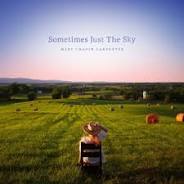
Sometimes Just The Sky (right) is a 15th studio album by the American singer-songwriter, , released by Lambent Light Records on March 30, 2018. It features re-recorded songs from earlier in her career, with one track from each of her previous studio albums and a new title track. The album has received positive reviews from critics and was commercially successful, placing on several charts, and topping the charts in the United Kingdom.
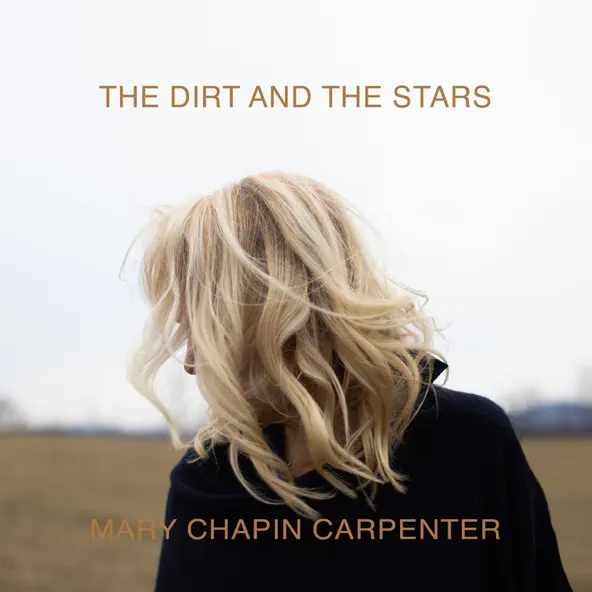
The Dirt and the Stars (left) is Mary Chapin Carpenter´s 16th studio album and was also rerleased on Lambent Light Records
In a press release, Carpenter described the songs on the album as very personal and difficult in some ways, and definitely come from places of pain and self-illumination, but also places of joy, discovery and the rewards of self-knowledge. She wrote the album at her Virginia farmhouse and recorded it at Peter Gabriel´s Real World Studios near Bath in the UK between January and February 2020 prior to lockdowns stemming from theCovid Pandemic.
Bob Paxman of Sounds of Nashville gave The Dirt and the Stars a positive review, praising Carpenter for her ability to “[get] her message across with lyrical passages that could easily pass for straight poetry” and the album’s cohesiveness that allows the songs to “build with nice opening sequences”.From ALLMusic, Thom Jurek of a L gave the album four out of five stars, highlighting the use of Carpenter’s “empathic” band to “erase all boundaries between singer and song”, and describing it as one of her standout albums from her entire repertoire.
Sam Sodomsky of Pitchfork magazine was similarly positive, giving the album a 7.7 out of 10. He wrote: “Three decades into her career, one of country music’s most reliable and empathetic songwriters offers a profoundly intimate record, full of hushed revelations.
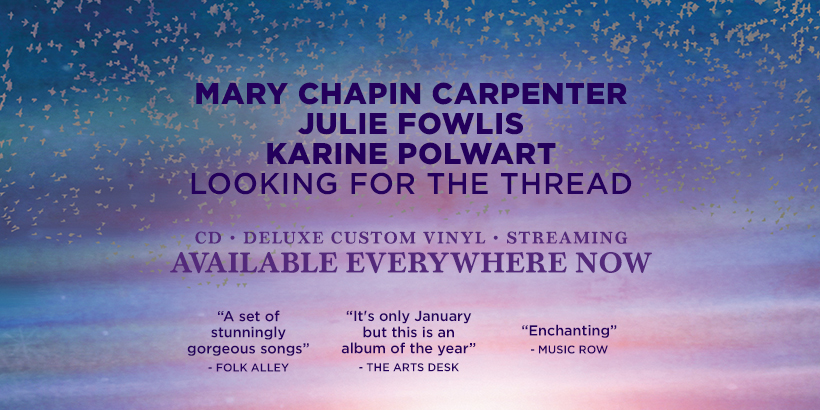
Looking For The Thread is a collaborative studio album by American singer-songwriter Mary Chapin Carpenter and Scottish musicians Julie Fowlis and Karine Polwart. It was released on January 24, 2025, by with distribution by Thirty Tigers for Lambent Light Records
The album was preceded by the release of two singles. The first single, Hold Everything, was released on November 24, 2024. The second single, A Heart That Never Closes, was released on January 10, 2025
Carpenter first reached out to Fowlis and Polwart in hopes of helping her with an album in 2022 before subsequently meeting together in Northern Scotland for two writing sessions in which eventuated in the recording of what would become Looking for the Thread in early 2024; it was recorded at the Real World Studios in Box, England. Of the recording process, Polwart said in a press release that the musicians who contributed to the album were attentive to the music at the time of recording, adding that the songs were not “pre-produced to within an inch of their lives-
Upon release, Looking for the Thread received positive acclaim from critics. Lyndon Bolton of Folk Alley wrote: Carpenter’s rich, empathetic American folk blends beautifully with the Scots, Fowlis and Polwart, who add their own traditional and contemporary styles.
Mike Davies of KLOF Magazine opined that the album offers a captivating meeting of different but kindred musical minds from different genres and cultures coming seamlessly together with shared themes and emotions.´
ALL POINTS FORWARD
Chapin and freinds are followed by PETER PEARSON
as they go LOOKING FOR A THREAD
I recently saw a ´trio gig´ that I had been eagerly looking forward to for some time. My labelling of it as a trio gig reflects that it featured Mary Chapin Carpenter on guitar and vocals with Karine Polwart, also on guitar and vocals, and Julie Fowlis on vocals and whistle These three well established performers, even though from slightly different genres, formed this recording trio and cut an album called
Tonight´s gig was sold out and the first night of the UK tour to support the album tour. Sadly, there was a somewhat embarrassing false start due to technical issues with the bands instruments but that done with, it was an excellent gig and warmly received by an enthusiastic audience.´ The back up band consisted of percussion, double bass, piano and organ and acoustic/electric guitar. The venue was ideal for the largely acoustic performance and the sound was excellent.
It was presented in a trio format with Mary C on guitar / vocals, flanked by Karine Polwart also on guitar/vocals and Julie Fowlis on vocals and whistle. The songs were mostly from their new trio album, so they took turns on lead vocal, with the others providing harmony. There were also a couple of songs each from their own catalogues.
Having seen Mary Chapin solo on many times it was rewarding to see her in a different setting. Her vocals and acoustic guitar work was as impressive as I have ever seen her and it was clear that the other two were slightly in awe of her.
I have seen Julie Fowlis many times, mostly on the TransAtlantic Sessions, but I had never seen Karine Polwart and I was highly impressed. That song of hers on the Rebecca album has been playing in my head since I first heard it and she delivered it note perfectly on stage.. She has a beautiful voice and is no slouch on acoustic guitar. I would certainly go again to see her solo if she were in the area in future.
MARY CHAPIN CARPENTER new album
Peter Pearson explores PERSONAL HISTORY
Sidetracks and Detours´ own Americana correspondent, Peter Pearson not only shared his thoughts on the album, Looking For A Thread, but also reviewed a recent UK concert by the Carpenter, Fowlis & Polwart trio in Pass It On which we repeat here, in the ethos of balance
MARY CHAPIN CARPENTER. Personal History
by Peter Pearson
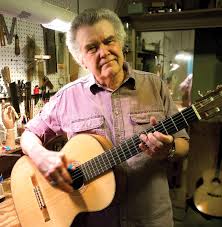
In the mid 1980’s Mary Chapin Carpenter-she prefers just Chapin-was playing for free at a Washington folk music cafe called Food For Thought. In 1987 she hit the big time when she was signed by Columbia Records and promoted as a country artist. It was a time when the outlaw country music of Waylon Jennings and Willie Nelson was giving way to singer songwriters whose music fell between the cracks of country and folk. Amongst the men were the likes of Guy Clark, Townes Van Zandt, Joe Ely, Steve Young and Steve Earle.
Emmylou Harris had paved the way for the women and in her wake came Nanci Griffith, Rosanne Cash, Lucinda Williams and Mary Chapin Carpenter. The marketing term, New Country, was used to promote them. Eventually the labels coined the music as Americana, though Nanci Griffith always preferred the less marketable term of Folkabilly
Anxious to cash in on their artists, the labels soon started to steer them towards pop where they would command more radio exposure and hence bigger album sales. Accordingly, the artists were encouraged to write radio-friendly tunes. Short songs with a catchy riff and simple lyrics would be the ideal.
Between 1989 and 1999 Chapin had 20 top forty selling singles and five Grammy Awards but then it ground to a halt.
Like her peers, she was becoming tired of being pushed into recording radio friendly hits. Her musical direction had evolved, and she sought a different creative environment, one in which artistic expression would take precedence over commercial considerations. Her last album with Columbia, Between Here and Gone (2004), was seen as an attempt to address declining commercial success. She then moved to Zoe Records (a division of Rounder Records) releasing The Calling in 2007, marking a new chapter in her career.
Her first two albums for Columbia, Hometown Girl (1987) and State of the Heart (1989) spawned singles that would establish her on BBC Radio 2 day time playlists alongside pop and rock artists. Quittin Time and Something Of A Dreamer, singles from her 1989 album are amongst her best songs from that period. The next 3 albums represent probably her finest work of the 90’s and formed the basis for her annual visits here in the UK. Her touring band were top notch musicians, ably led by guitarist and long-time producer John Jennings.
The trilogy of Shooting Straight In The Dark (1990) Come on Come On (1992) and her finest of that period, Stones In The Road (1994) belong in the collection of anybody who loves Americana music. I think this album signalled her direction of travel-one in which the lyrics would become key to the song. My standout tracks from this album are John Doe NO.24 and the title track but there are no fillers at all on this album. She had set the bar at a level that would be extremely difficult to improve upon, or even equal, in terms of a whole album. In my view, for the most part, with the exception of the excellent Ashes And Roses (2012),that was how it would be, until this year.
John Doe NO.24 is based on a true story. In the early hours of October 11, 1945, a black youth was found by 2 police officers rummaging in an alleyway in Jacksonville, Illinois. He was believed to be mentally retarded, and because of his bizarre behaviour he was committed to an institution later that month where he became known as John Doe No 24. He was never positively identified, and he would spend the rest of his life being cared for by the state. In 1976, his name was changed for social security reasons to John Doe Boyd (date of birth unknown). He died November 28, 1993. Chapin read his obituary in the New York Times while sitting in a Starbucks café in Washington, and wrote the song from his perspective.
Stones In The Road was covered by Joan Baez with whom she formed a firm friendship. It is a beautifully crafted song, written as a reminder of the role models that she grew up with in the 1960s.
The Stones In the Road album spawned several hit singles and received critical acclaim for its balance of different musical styles and moods, from up-tempo country to more introspective ballads. With successive albums her songs became more introspective. There were some great songs but the albums were more patchy, laced with what I would call fillers and ballad heavy.
Following her move to Zoe in 2007 she suffered some personal challenges including a life threatening pulmonary embolism, the end of her marriage and the death of her father in 2011. Her music started to reflect that grief.
During this time I fell out of love with her music. The regular UK tours had long since ground to a halt.
Her Ashes and Roses album of 2012, whilst deeply introspective, seemed to me to represent something of a comeback. The following year she appeared on the BBC TV Transatlantic Sessions series and joined their UK tour. At the Manchester gig she was in excellent form and rounded off the evening with Mark Knopfler‘s rumbunctious The Bug.
Whilst most of the work on her albums have been self-written, she has covered a number of songs by other artists. As early as her first album, Hometown Girl, in 1987 she recorded John Stewart’s Runaway Train. It was intended to be on the album but was pulled at the last minute by her label because Rosanne Cash was issuing it as a single. A previously lost demo tape of a duet recording of it by Stewart and Chapin recently surfaced on Youtube. A similar tape exists of a duet by the pair of the song Christmas Time In The City (a song featured on her 2008 studio album Come Darkness, Come Light- 12 Songs of Christmas). It appears on Youtube as part of an extended collection of unreleased songs of John Stewart under the title- Wheels Along The Boulevard.
She has covered Tom Waits, Lucinda Williams, Mark Knopfler and Greg Brown’s One Cool Remove, in a duet with Shawn Colvin
Perhaps my favourite cover of hers is another of Greg Brown’s songs, Spring And All, which appears on the Greg Brown tribute album, Going Driftless, An Artist’s Tribute to Greg Brown (2002)
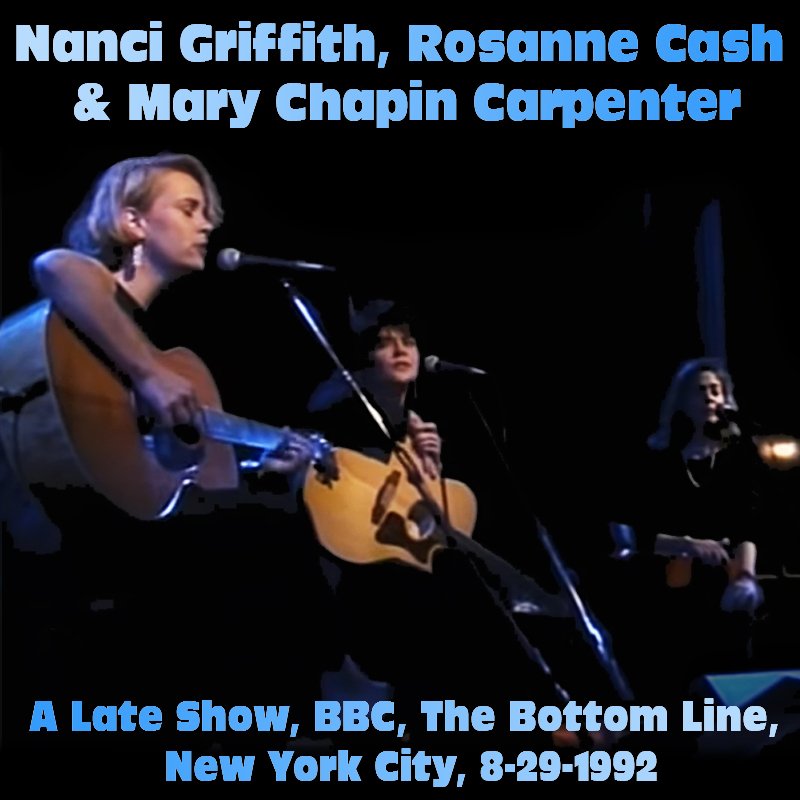
Vocal collaborations abound. In 1991 the BBC recorded an acoustic song swap concert at New York’s Bottom Line featuring Chapin, Nanci Griffith and Roseanne Cash. It aired in a 1992 Late Show Concert. Her 1996 live concert DVD-Jubilee,Live at the Wolf ap shows her duetting with Joan Baez on Stones in the Road.
I know how much Norm lovesd it when serendipity sprinkles these pages, so I am delighted to tell him of a re-airing of a song swap between MCC, Nanci G and Rosanne Cash. It just so happens that it was repeated a week last Friday, 25th July 2025 on BBC 4 at 11-15pm BST. You should be able to fin it on Catch Up or whatever platform you smart tv uses. It was preceded by a repeat of Cat Stevens in concert at 10-45 and followed by Gordon Lightfoot-12-00 to 1-05 -followed by an Old Grey Whistle Test of Jackson Browne.
I caught the reat of the programme, Peter, and I loved is you will see frfom my ´review´at the foot of your contributions. NPW, editor.
Chapin was a great friend of the late singer songwriter and part-time country doctor Ben Bullington. She sang harmony vocals on a couple of his albums and wrote the song Livingston (featured on her 2016 album The Things That We are Made Of), which she recalls her last visit to see him at his home in Livingston, following his terminal cancer diagnosis.
There is, though a shyness within Chapin, though, that inhibits her desire to co-write with some of her song-writing idols nor even share a stage with them. In a 2019 podcast recording of Peter Cooper interviewing Chapin for the Country Music Hall Of Fame series, Voices in the Hall, Peter Cooper asks Chapin about collaborating on song-writing with Don Schlitz, who amongst other famous songs had written Kenny Rogers’ The Gambler.
The response was:
“He and I shared the same business manager. And I would be walking through the parking lot to go meet with my business manager, and he’d be outside smoking cigarettes. And he’d say, “Hey, Carpenter. Come over here.” And it was like… Don
Schlitz is a big guy and at that time he had a lot of hair.
And I’m just like, “What? Who is this guy? And I don’t know what I’m doing here.” And he’d forced me to talk to him. It sounds crazy, but I just wanna get away from him. I just…he…I was shy. And I’ll tell you another thing. One of the biggest regrets of my life is that Guy Clark asked me to sit down with him (and write), and I was too afraid to. I was too shy. You hold people in esteem and you put them on pedestals and that’s probably not a good thing to do when they’re asking you to take them off that pedestal and just be with you in a room and try to craft something. And I always had an excuse because I was afraid to be in that room.”
Eventually Don Schlitz talked her round and they co wrote several of her hits.
Guy Clark never did.

Fast forward to January of this year, five years after her last studio album, when Chapin, Julie Fowlis and Karine Polwart released a trio album, Looking For the Thread. Each of them contributed their own original material.
There were no co-writes!
It is an excellent album and has received widespread critical acclaim. They toured the album in the UK in March, kicking off the short tour in my hometown of Manchester. It was a sell-out and one of the best performances I have seen in recent times.
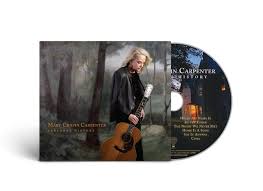
There had been no mention of forthcoming solo albums and so it was a surprise when, in May, Chapin announced a solo album release for June. The album, Personal History,(right) is widely regarded as her best since Stones in The Road .Some say it is better but I think, not quite, because it lacks the variety and reflects the title, that of an introspective memoir.
There are no fillers though and there are some beautiful songs, not least the album’s opener, What Did You Miss? Most of the songs were written towards the end of Covid and this period echoes the song’s lyrics.
The second track, Paint And Turpentine, is an ode to the late Guy Clark, the lyrics to which shed further light on her comments to Peter Cooper. In an interview about the album she expands on his part in her personal history.
As a 20 something hopeful she would go the famous Birchmere Club in Washington, where she got to know the manager, to the extent that knowing she was just starting out and was short of money, he would sneak her in to see her favourite artists. Eventually she got to meet her hero there and was invited to join him to sing on stage.
She must have navigated that hurdle quite well because years later, with a record contract under her belt, Guy invited her to co-write.
That lack of self confidence to say yes has haunted her ever since and is laid bare in the songs lyric “Memory cut like a Randall knife/Felt like it went right through me.”
At 67,with this album she expresses hope that these songs allow the listener to come away not only with a musical sketch of her life from young adulthood on, but also an affirming reflection of their own life as well. Critical response to the album suggests that in this she has succeeded.
THREE DIAMOND QUEENS IN ONCE CONCERT by Norman Warwick
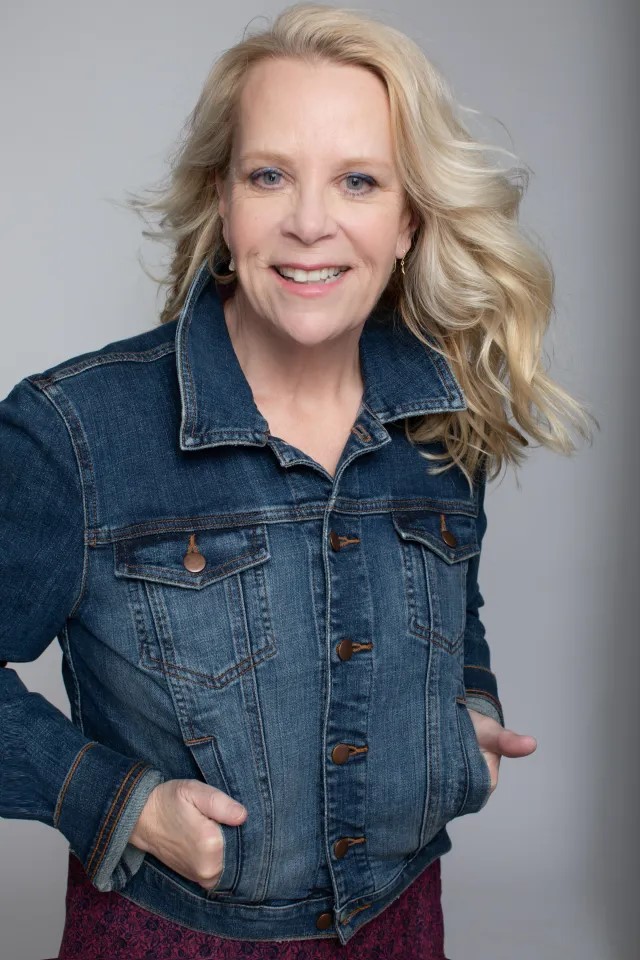
It was fantastic to receive a quick e mail from Peter, advsing me early that that BBCtv 4 would soon be re´screening a decades old concert showcasing Roseanne Cash, Nanci Griffith and Mary Capin Carpenter (right) who, at the time of the concert, were all bursting on to the scene at the same time. So new were they then that the labels, media, and fans were still busy trying to create new categoris to accommodate them.
I can´t quite recall whether Peter and I had ever met at that stage but I am sure we would both have been fully aware of their individual skill sets. Roseanne was a rock chick attituide from a Carter Cash hot bed of music, and was beginning to develop a penchant for elevatng the songs of even the greatest writers and performers. Nanci Griffith ws our new folksie fairy princess skipping off the school bus at the Woolworths´store, ´to buy unnecessary plastic objects?´ Chapin, as she preferred to be called, was the new kid on the block, young and polite and with a perhaps intellectual air. By the time thic concert was first aired in the UK I had met and interviewed the soft speaking Chapin and when I think back I realise that I knew even then that Roseanne, Nanci and Chapin would sculpt a new country with bridges from traditional to modern in the same as had already been undertaken by Emmylou Harris, Dolly Parton and Linda Ronstadt.
This repeated concert of Cash; Griffith and Chapin showed us these three young people honing their craft and revealing, perhaps, new sides of their personalities.
Each of them delivered an opening number that reminded us us of the skill sets referred to ealrier. When Nanci kicked off the prioceedings The Bottom Line audiuence was intensely silent as Nanci reminded us of the Light Beyond These Woods for she and a childhood friend, Mary Margarette as they shared insecurties and hopes and spoke of imagined boyfreinds. Sitting, like the others, one of three high bar stools placed centre stage in a dimly lit room it seemd increadible that one so young could so tightly hold an aidience in the palm of her hand as Roseanne and Chapin looked on and l istend in with obvious pride and approval.
Rosanne was next up and her opening number reminded us of her resilience and her determination to create her own idnetity even as part of such a stella r msical family act. She gave us a gorgeous acoutic guitar version of Rise From The Ashes,
Mary Chapin Carpenter revealed her ability to deliver a withering pit down with You Never Had It So Good, I Never Had It so Bad
Those introductions had shown thier mutual respect throughout each number and many of the next series of songs would see them each offering unobtrusive but important harmony fillers. Nanci gave us a suggestion that it all might be Too Late
Roseanne gave us a song accusing someone, and perhaps even herslef, of Bedroom Lies.
It was Mary Chapin Carpenter who first lifted the lrics to a level of optimism. Having read a particularly pleasing horoscope, she embarks on a series or risk adventures, underwritten by her ovseveration that I Feel Lucky. So lucky in fact that at one time she found herself in a honky tonk bar, with one musician giving her the eye, with ¨Lyle Lovett right beside me with his hand upon my thigh
(I rely upon the) The Moon And St. Christopeher by Chapin, is one of maybe twenty songs that over the years have given me codes to live, She sang it almost like a prayer or at least as an acclamaton of her own particular sort of faith.
Another code I have certainly followed throughut my life cncurs with Nanci´s closing number, (If You Can´t Find A Freind) , You´ve Still Got The Radio, applauing those artists like Emmylou Harris and Loretta Lyn who gave those songs to radio !
What made this re-televised concert so wonderful was that it seemed to to show three apprentices each recognising their own skills and stepping out there on then to what they must have known would becme glittering carers. There was empathy and sympathy and prospects,………………….. and yet we know, decades after this event, how these three women created great career paths,……..and that soon they will be followed the by the next generation, some of whom Peter and I could even name now,……but that´s for another time.
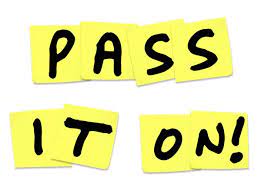

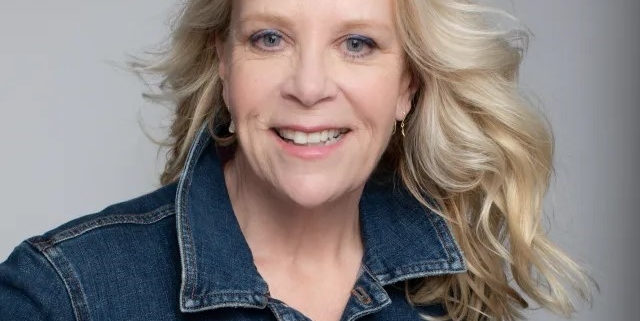


Leave a Reply
Want to join the discussion?Feel free to contribute!